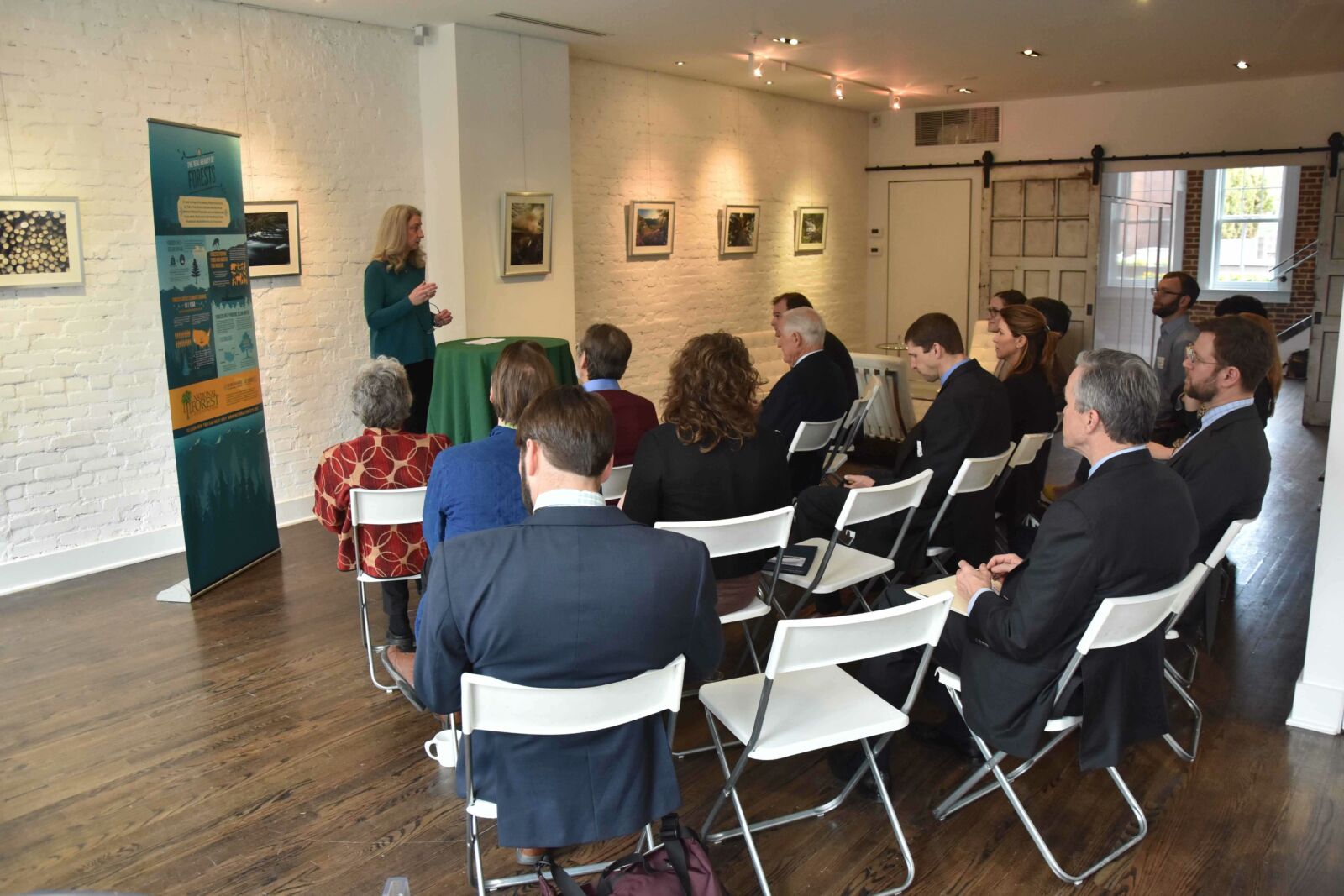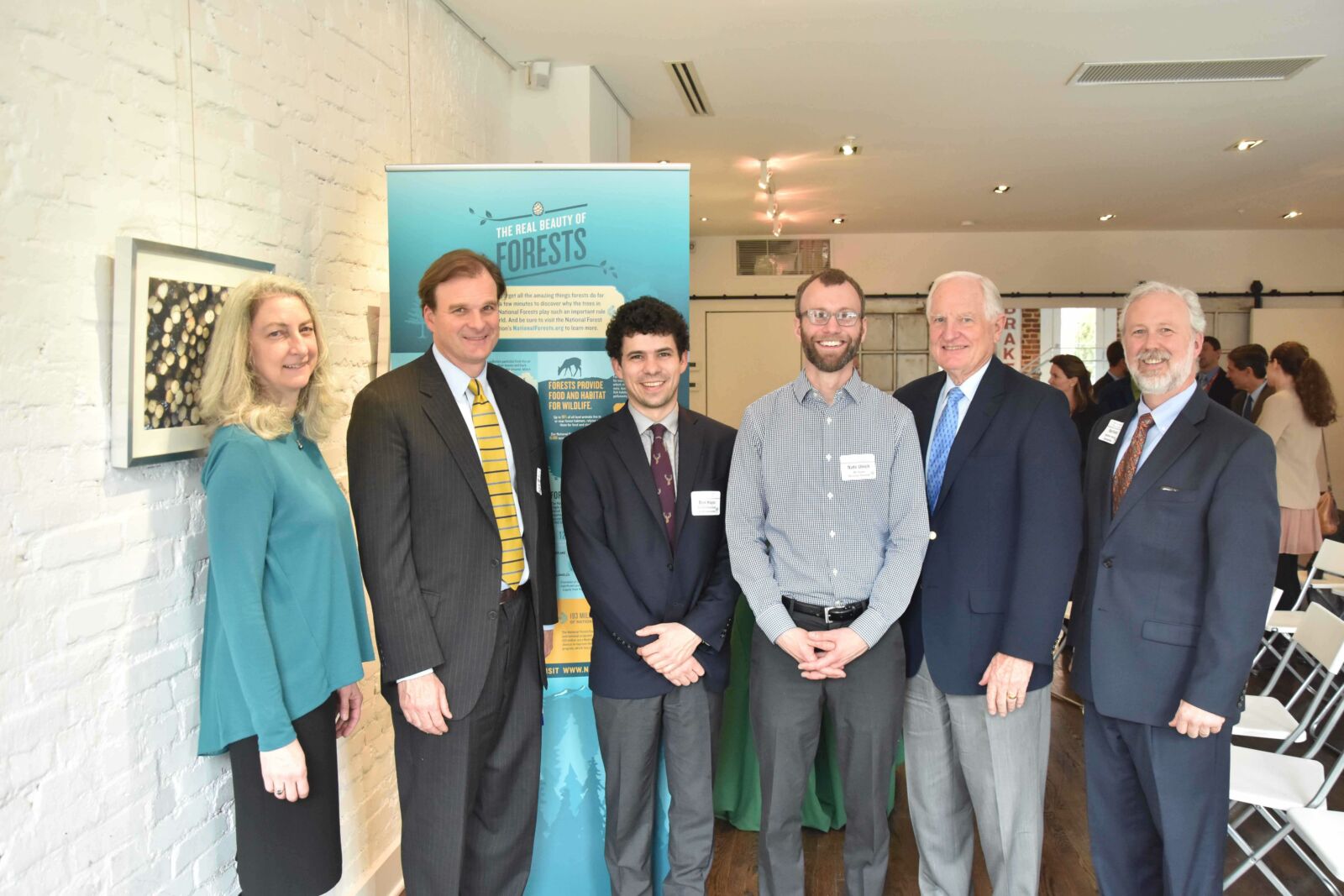Natural resources management is a complex endeavor. Whether a small private parcel of forest land or a multi-million-acre unit of the National Forest System, forests are interconnected ecosystems where management decisions often have a cascading affect. Additionally, monetary resources, particularly for federal land managers, often don’t cover all of the myriad needs on a particular forest.
The National Forest Foundation works to ensure that the 193 million acres of forests and grasslands comprising the National Forest System have the resources they need. While this often means fundraising from corporations and individuals, it also means supporting creative initiatives that can improve forest management in a number of ways.
The Barrett Foundation Business Concept Challenge is one of these creative initiatives. Designed to bring entrepreneurism and market-based innovation to natural resources management, the Challenge awards $100,000 in prize money to business concepts that hold promise for increasing National Forest restoration.
Last week, I had the privilege of attending the award ceremony in Washington, DC that recognized the 2015 Challenge winners. DC is always an exciting place to visit and that energy transferred to the small but bright room where we held the ceremony.
The winning team, Whole Trees, Architecture and Structure, employs a unique business model that utilizes entire trees in buildings and structures.
Framed photos of verdant National Forests adorned the white walls. These photos – lush, green forests and rushing streams – juxtaposed with the sparse but elegant beauty of the winning team’s photos – whole trees, stripped of bark and used in their entirety (complete with branches) in architectural structures. It was an engaging display, evidenced by the attendees intently examining the different ways trees display their beauty.
NFF Board Chair and Challenge sponsor, Craig R. Barrett’s remarks focused on the unique nature of the Challenge. When we first launched the competition, many of the proposals suggested creating a tax or funding mechanism that resulted in increased investment in National Forest restoration. While these plans were sound, they failed to truly bring market-based solutions to the challenges facing our forests.

NFF Executive Vice President Mary Mitsos speaks at the award ceremony.
Not so this past year. The winning team, Whole Trees, Architecture and Structure, employs a unique business model that utilizes entire trees in buildings and structures. Whole trees are not only more beautiful than milled lumber, but also significantly stronger. That means, you can use smaller trees, one of the most difficult-to-market products of forest restoration, to replace milled lumber and even steel in many building applications.
The second place team was no less innovative or committed. Klickitat Community Forest Products’ model builds efficiencies into timber processing that can unlock new revenue currently spent on transportation. By building a transportable lumber mill that produces four specific products, Klickitat can essentially turn any logging operation into a milling operation and provide finished market-ready products without having to transport logs to a traditional mill.
Without market-based solutions, the human race isn’t going to protect and improve the most important water provider, clean air maker, carbon storage solution we have – forests.
These approaches are remarkably creative and provide real potential to increase forest restoration by creating markets and more efficient production methods for small-diameter trees. This innovation is critical because small diameter trees can exacerbate forest health issues, but are prohibitively expensive to remove and turn into marketable products.
But the people behind the concepts are even more inspiring. Each winner expressed a deep and lasting conviction that forest health is critical to our nation and our communities. Whole Trees founder Amelia Baker noted: “Without market-based solutions, the human race isn’t going to protect and improve the most important water provider, clean air maker, carbon storage solution we have – forests.”
And they each recognized that markets and business should play an instrumental role in improving forest health. Nate Ulrich of Klickitat said directly: “We need these market solutions.”

They’re both right. Of course, neither business is going to create a market large enough to restore the tens of millions of National Forest acres requiring restorative action. But expanding the notion of what businesses can do to make a profit while helping restore our nation’s forests is a critical component to perpetuating a healthy legacy of publicly-owned forests for generations to come.
After the speeches and questions, attendees milled about, chatting up the winners. The teams’ passion and energy had spread throughout the room and no one was in a hurry to leave, despite pressing deadlines and busy workloads. In fact, we struggled to shepherd everyone out of the space in time. But it didn’t matter. The teams simply moved downstairs to the restaurant below, exchanging ideas over drinks and appetizers. I couldn’t join them, but it’s where I wanted to be.

